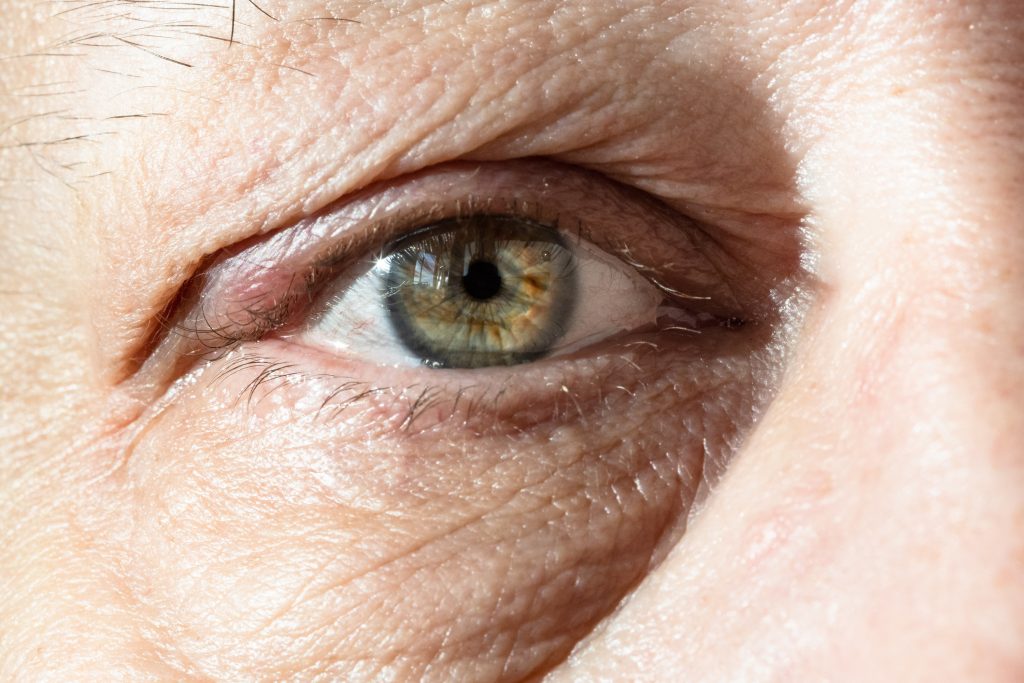Droopy Eyelid
Ptosis, also known as a droopy eyelid, occurs when your eyelids sag down and cover your eye. This can cause vision problems and potential complications. It can be present since birth or develop later in life, but there are treatments that can help. If you are experiencing droopy eyelid, it is advisable to consult with an eye care specialist to explore the available treatment options.

What Are the Symptoms?
The primary indication is when one or both of your eyelids hang lower than usual. Although it doesn’t cause any pain, it can hinder your vision. To improve your sight, you may need to tilt your head backwards and lift your chin, or raise your eyebrows to lift your eyelids. These repeated actions may eventually impact your head and neck.
If your child has this condition, there is a possibility they might also develop amblyopia, commonly known as “lazy eye.” Amblyopia refers to a condition where one eye doesn’t develop properly during childhood, resulting in poor vision. This can occur if the eyelid droops excessively, obstructing vision or causing blurred vision. It is crucial to address this issue during early childhood to prevent any permanent vision impairment.
Who gets droopy eyelid?
There are various reasons why a person may have droopy eyelids, which can range from normal occurrences to more severe medical conditions.
Droopy eyelids can occur in anyone, without significant variations in occurrence rates among males, females, or different ethnic groups.
Nonetheless, it is more prevalent in elderly individuals due to the inherent process of getting older. The levator muscle is accountable for elevating the eyelid, yet as one ages, this muscle can become stretched and consequently lead to the descent of the eyelid.
However, it is important to note that individuals of every age can experience the impact of this ailment. It is even possible for infants to be born with ptosis, although this occurrence is uncommon.
On certain occasions, the specific reason is uncertain, whereas in other cases, it could potentially be attributed to injury. Alternatively, it could also be related to the nervous system.
What happens if ptosis is left untreated?

If your child is born with congenital ptosis, it is advisable to seek treatment as early as possible for better outcomes. Neglecting to treat the condition could affect their vision development and result in various other problems. In the case of mild acquired Droopy Eyelid, vision issues are less likely to arise, and treatment may not be necessary. However, if the ptosis is severe and left untreated, it can lead to serious complications. Such complications may include:
- Astigmatism occurs when the eyelid applies pressure to the front of the eye, altering its shape and resulting in vision distortion, characterized by stretching or waviness.
- Amblyopia, also known as lazy eye, can be caused by astigmatism and other refractive errors that result in difficulty focusing and require the use of glasses.
- When your child needs to lift their chin upwards in order to see above their sagging eyelids, it can lead to issues in the neck, tensed muscles in the forehead, and delays in development.
How is ptosis diagnosed?
The ophthalmologist will examine all of your symptoms, not only focusing on your eyelid problems. They may inquire about your previous medical background and whether any of your family members have ptosis or inherited muscle disorders.
An exhaustive examination of the eyes will be conducted, and in some cases, additional tests like blood tests or imaging tests such as a CT scan or an MRI scan may be required.
Children with untreated congenital Droopy Eyelid typically experience a stable condition that does not worsen as they grow, but it is advisable for them to have an annual visit to an eye specialist. On the other hand, individuals with age-related ptosis may see a gradual increase in drooping over time.
Management and Treatment
How do you fix Droopy Eyelid?

The treatment for ptosis generally relies on the functionality of your eyelid muscles. If the condition does not impact your vision and you are not bothered by the way it looks, treatment may not be necessary.
Your eye care specialist may suggest treatment if ptosis affects your vision or appearance or both. The treatment plan will vary based on whether the Droopy Eyelid is caused by a disease or by aging. Typically, surgical intervention is involved in treating ptosis caused by aging.
Droopy Eyelid surgery
Ptosis surgery may be suggested by a doctor, in which the levator muscle is tightened to elevate the eyelid to the desired position. In the case of ptosis in children, doctors may also advise surgery to prevent the development of amblyopia, commonly known as lazy eye.
Nonetheless, there are potential dangers connected to undergoing surgery, such as experiencing dryness in the eye, scratches on the cornea, as well as the formation of a hematoma, which involves the accumulation of blood.
Moreover, while surgeons make sure to position the eyelid at a suitable level, it is advisable to undergo assessment by an oculoplastic surgeon to prevent potential harm to the eyes.
Another option is a surgical procedure known as a “sling” operation, which involves using the muscles in the forehead to lift the eyelids.
Eye drops for ptosis
There is a prescription eye drop medication named oxymetazoline that is intended for adults with certain types of acquired Droopy Eyelid. It specifically targets the levator muscle and has been found to help some individuals in widening their eyelid after use. However, consistent daily use is necessary for the medication to remain effective. It is important to note that these drops may not be effective for all types of ptosis, thus it is advised to consult with an ophthalmologist to determine if they are suitable for your condition.
What can I expect if I have ptosis?
The prognosis of ptosis, which refers to the outlook, relies on the severity and type of the condition. Generally, if surgery is required, the prognosis is positive. The majority of surgeries conducted to fix drooping eyelids have high rates of success.
How Do I Manage It?
If you experience difficulties performing tasks such as driving, reading, or using stairs due to ptosis, it is advised to consult your doctor.
If there are any additional problems with the eyes that could worsen the situation, it is important to address them. If your doctor recommends it, consider undergoing surgery to treat vision loss or restricted visual field resulting from ptosis. Surgery can not only enhance vision, but also boost self-confidence for teenagers. It is recommended for children with ptosis to have regular check-ups with an eye doctor.
Having Droopy Eyelid Surgery in Turkey?
The patient must carefully search for an appropriate service provider, have information, and ask about the surgeon and his experience. And also, checking examples of his previous operations.
Accordingly, we encourage you to contact the Health & Beauty to obtain all information and details, and to ensure that you have your operation done by the hands of the most skilled doctors working in this specialty.
